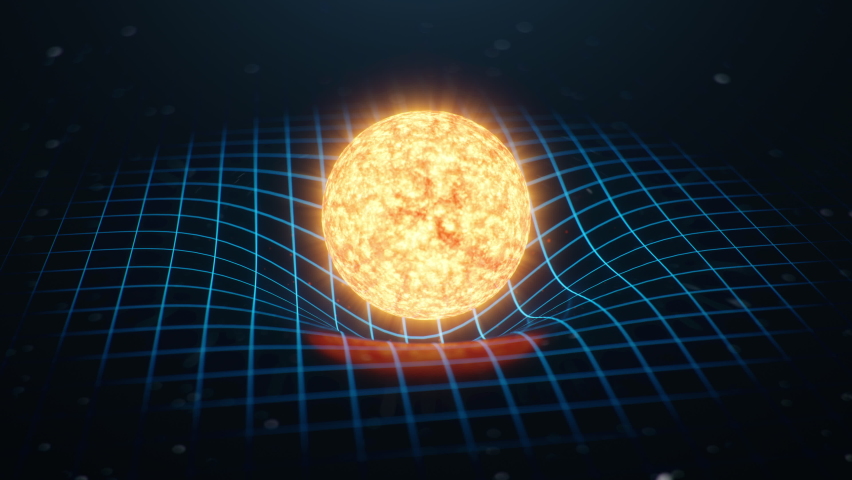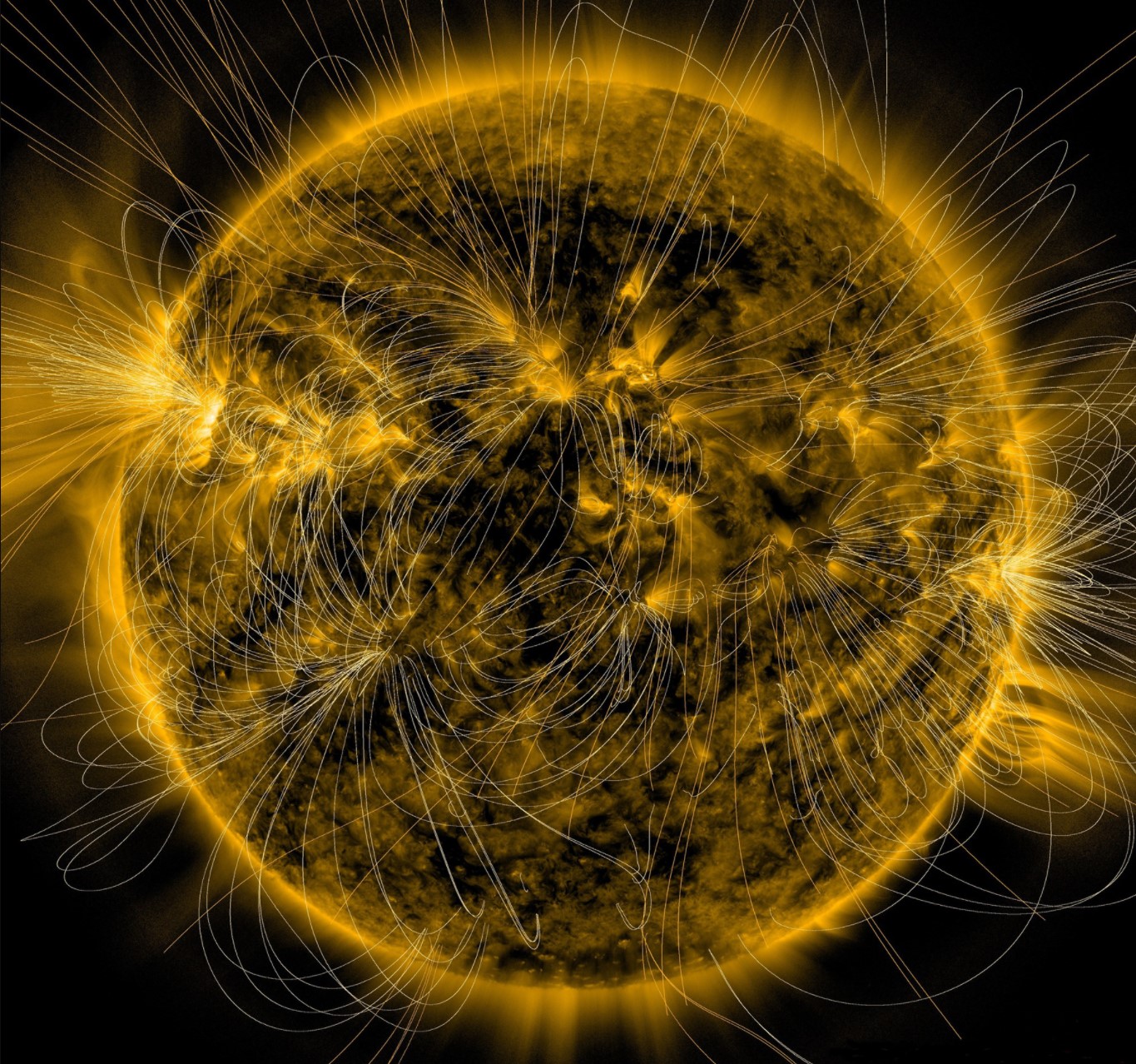

Sun

What is the Sun?
At the heart of our Solar System resides a magnetic star, famously referred to as the Sun. This celestial body is classified as a yellow dwarf star due to its size and characteristics. The Sun is a nearly spherical mass of scorching plasma, primarily composed of hydrogen and helium. The extraordinary heat and pressure at its core facilitate nuclear fusion reactions, a process that releases an enormous amount of energy in the form of light and heat.
The Sun emits energy across a wide spectrum, including visible light, ultraviolet radiation, and infrared rays. These radiations play a vital role in sustaining life on Earth, driving processes like photosynthesis in plants and influencing our planet's climate and atmospheric dynamics.
What is special about this star?
While the Sun might seem unremarkable when viewed within the context of the billions of stars scattered across the cosmos, its role is pivotal for our solar system. The Sun acts as a commanding focal point around which Earth and other planets gracefully orbit. Its gravitational pull not only keeps the planets in their intricate trajectories but also influences the dynamics of comets, asteroids, and other celestial objects within its reach.
Beyond its gravitational influence, the Sun's radiance profoundly affects Earth's environment. Its light, heat, and energy are fundamental drivers of life on our planet. The warmth and illumination the Sun provides sustain ecosystems, regulate climates, and power essential processes like photosynthesis—the basis of food chains on Earth.
Morphology
Dimensions
The Sun boasts an astonishing diameter that spans about 1.4 million kilometers (865,000 miles). This measurement is so immense that it's difficult to fathom its true scale. To put it into perspective, the Earth could comfortably fit around 110 times across the Sun's equator.
Anatomy
The Sun is an awe-inspiring sphere of plasma, primarily composed of hydrogen with trace amounts of other elements. Its anatomy is divided into distinct layers that collectively define its intricate structure. Until recently, the two outer layers of the Sun's atmosphere, namely the chromosphere and the corona, were not commonly observed. These layers, which begin around 400 km (250 miles) above the solar surface (the photosphere), play an essential role in the Sun's behavior and hold the key to understanding solar storms.
Core: Positioned at the heart of the Sun, the core is a region of intense activity where thermonuclear reactions occur. These reactions generate an extraordinary amount of energy, resulting in temperatures soaring to around 15 million degrees Celsius (27 million degrees Fahrenheit). Expanding about one-fifth of the Sun's radius away from its center, the core is the engine that fuels the Sun's luminosity and warmth.
Radiative zone: Surrounding the core, the radiative zone extends outward. It constitutes roughly almost 50% of the Sun's radius. Here, energy produced by fusion in the core travels outward as electromagnetic radiation. This energy takes a staggering 170,000 years to traverse the radiative zone. Photons, carriers of this energy, zigzag and bounce through this region multiple times before emerging.
Convection zone: Enveloping the radiative zone, the convective zone forms the Sun's outermost interior layer. Extending to a depth of around 181,855.872 kilometers (113,000 miles), this zone is characterized by the movement of heated and cooled gas, driven by convection currents. As energy from the core is transformed into heat, it creates currents that transport heat towards the Sun's surface. These currents continue until the heated gas cools sufficiently to descend.
Photosphere: The photosphere, often referred to as the solar surface, is the Sun's outermost layer directly observable from Earth, spans from the visible surface at the central point of the solar disk to roughly 400 km (250 miles) above it. This layer reveals a temperature gradient, ranging from around 6500 K at its lower boundary to approximately 4000 K at its upper extent (equivalent to 6200 and 3700 °C, or 11,000 and 6700 °F). It showcases a granular texture, resulting from bubbling gas in the underlying convection layer. Sunspots, regions of reduced temperature caused by strong magnetic fields, are also observed on the photosphere.
Chromosphere: The chromosphere, a relatively thin layer in the Sun's atmosphere, is a dynamic realm shaped by the intricate interplay of magnetic field lines that contain the electrically charged solar plasma. Within this layer, captivating phenomena unfold. Prominences, larger plasma structures, occasionally emerge, extending far into the extremely rarified and scorching corona. Sometimes, these prominences even eject material away from the Sun, creating visually stunning solar events. Positioned between approximately 400 km (250 miles) and 2100 km (1300 miles) above the solar surface, known as the photosphere, the chromosphere showcases a temperature range that spans from about 4000 K at its base (referred to as the temperature minimum) to around 8000 K at its upper boundaries (equivalent to approximately 3700 and 7700 degrees Celsius, or 6700 and 14,000 degrees Fahrenheit). Remarkably, the temperature trend in the chromosphere and higher layers contradicts that of the lower layers; as you move away from the Sun, the temperature actually increases. This contrasts with the lower layers where proximity to the Sun's center leads to higher temperatures.
Corona: The corona, situated as the Sun's outermost layer, commences its existence around 2100 km (1300 miles) above the photosphere, the solar surface. Boasting temperatures that surge to an astonishing 500,000 K (500,000 °C, or 900,000 °F), and occasionally even reaching a few million K, the corona is an arena of formidable heat despite its apparent distance from the core. Observable solely during total solar eclipses or through specialized equipment like a coronagraph, the corona eludes a precise upper boundary. Within this enigmatic expanse, ionized elements emit a resplendent glow in x-ray and extreme ultraviolet wavelengths. Exploiting the subdued nature of the photosphere in these spectral ranges, scientists capture the corona's essence at these heightened energies. One of its captivating features, coronal streamers, materialize as the corona's outward-flowing plasma elegantly conforms to the intricate contours of magnetic field lines. These streamers, characterized by their tapering forms, extend gracefully for millions of miles into the unfathomable depths of space, embodying the Sun's dynamic energy and the pervasive influence of its magnetic forces.
Location
The Sun occupies a pivotal position in our cosmic neighborhood. It is located at a distance of 1 astronomical unit (AU) from Earth, which corresponds to approximately 149.6 million kilometers (92.96 million miles). This proximity forms the basis for our measurement of distances within our solar system.
However, on a grander scale, the Sun takes its place within the Milky Way galaxy. Positioned roughly 27,700 light-years away from the central point of our galaxy, it revolves around a supermassive black hole that marks the galactic center. This colossal black hole exerts its gravitational influence on the Sun and countless other celestial bodies, contributing to the majestic dance of cosmic forces that shape the Milky Way's structure.
Physico-chemical properties
Unlike the solid structure of Earth, the Sun is a dynamic and turbulent sphere of plasma. As a result, it lacks well-defined boundaries akin to those of a rocky planet. Instead, the Sun's composition is dominated by its layers, each predominantly comprised of elements forged in the crucible of nuclear fusion.
Hydrogen, the lightest and most abundant element in the universe, constitutes a staggering 92.1% of the Sun's composition. Helium, the next most abundant element, accounts for 7.8% of its constitution. The remaining 0.1% comprises a diverse mix of other elements, each contributing to the Sun's unique physico-chemical makeup. Oxygen, carbon, nitrogen, silicon, magnesium, neon, iron, and sulfur are among the key constituents within this fraction.
The Sun's awe-inspiring heat and luminosity arise from an intricate dance of nuclear fusion reactions deep within its core. Unlike the combustion processes that rely on oxygen seen on Earth, the Sun's fusion reactions occur under conditions of extreme pressure and temperature. This high-pressure environment, facilitated by the Sun's powerful gravitational pull, drives hydrogen nuclei to fuse together, forming helium atoms. This fusion process liberates an enormous amount of energy in the form of light and heat, sustaining the Sun's brilliance and warmth.
The Sun's core temperature, soaring to millions of degrees, is fueled by the ceaseless movement and collision of hydrogen atoms. These collisions are so intense that the electrostatic repulsion between positively charged atomic nuclei is overcome, enabling them to merge and create helium nuclei. This phenomenon, known as nuclear fusion, releases a colossal amount of energy and maintains the Sun's radiant vitality, powering the entire solar system.
Temperature
The Sun's temperature exhibits a remarkable range of values across its various layers, showcasing the diverse conditions that exist within its dynamic structure.
At the heart of the Sun, the core, temperatures soar to an astonishing 15 million degrees Celsius (27 million degrees Fahrenheit). This extreme heat is generated by nuclear fusion reactions that power the Sun's radiance and energy emission.
Moving outward, the photosphere, which is the visible surface of the Sun, manifests temperatures around 6500 K (6200°C or 11,000°F) at its lower region. This is the region from which most of the Sun's visible light and heat emanate. Progressing towards the top of the photosphere, temperatures gradually decrease to approximately 4000 K (3726.85°C or 6740.33°F).
Transitioning to the chromosphere, temperatures are around 4000 K (3700°C or 6700°F) at its base. This layer is characterized by its reddish hue and is typically observed during solar eclipses. Ascending to its upper regions, temperatures rise significantly to around 8000 K (7700°C or 14,000°F).
The corona, the Sun's outermost layer, defies expectations with its astonishingly high temperatures. Despite being farther from the core, its temperature ranges from 500,000 K (499,726.85°C or 899,540.33°F) to a staggering 1 million K (999,726.85°C or 1,799,540.33°F). This enigmatic region remains a subject of intense scientific investigation, as its heat source is paradoxically hotter than the layers closer to the Sun's core.
As we venture towards the outermost region of the convection zone, temperatures experience an interesting shift. While the temperature at the bottom of the convection zone reaches around 2 million degrees Celsius (3,600,032°F), the heat exchange processes create a complex interplay that influences the Sun's overall behavior.
These diverse temperature ranges underscore the Sun's intricate dynamics, from the immensely hot core to the enigmatic, scorching corona.
Age
The Sun possesses an estimated age of approximately 4,500,000,000 terrestrial years. This age represents the span of time that has passed since the Sun's formation from a vast cloud of gas and dust. This long evolutionary journey has shaped the Sun into the radiant and dynamic star that illuminates our solar system today.
Luminosity
The Sun's luminosity is equivalent to approximately 1 solar luminosity, often represented as 1 L☉. This corresponds to an astonishing output of about 382.7 septillion (10²⁴) watts. This immense amount of energy radiated by the Sun is a testament to its powerful nuclear fusion reactions occurring in its core. The Sun's luminosity not only illuminates our solar system but also serves as a primary source of energy that sustains life on Earth and drives its dynamic climatic and environmental processes.
Force fields

Gravitational force
The Sun exerts a gravitational force that is equivalent to approximately 27.94022 times Earth's gravity, often quantified as 27.94022 Gforce or approximately 274 m/s². This substantial gravitational influence is a result of the Sun's colossal mass, which amounts to about 1.9885 × 10²⁴ kilograms. This immense mass and the resulting gravitational force play a crucial role in anchoring the orbits of planets, moons, and other celestial bodies within the solar system.

Magnetic field
The Sun's entire atmospheric realm is pervaded by magnetic fields, arising from the intricate solar dynamo mechanism operating near the base of the convection zone. Through a process of magnetic buoyancy, these fields ascend from the depths of the photosphere to permeate the overlying atmospheric layers. As a collective entity, the Sun exhibits a magnetized dipole configuration, characterized by a magnetic field intensity that hovers around 1 Gauss.
Within the Sun's expansive magnetic influence, the total magnetic flux extends across a range of 1.5 to 2.5 × 10²² Maxwell. A particularly intriguing phenomenon is the periodic reversal of the mean magnetic field's polarity, occurring approximately every 10 to 11 years. This reversal becomes evident as new sunspots materialize at latitudes spanning 38 to 40 degrees.
In the photosphere, the Sun's visible surface, the solar magnetic fields can be directly analyzed through the Zeeman Effect's spectral line splitting. This effect is the outcome of a spectral line dividing into multiple components in the presence of a stationary magnetic field. The extent of polarization within these split spectral components is contingent upon the magnetic field vector's magnitude and orientation. By meticulously measuring both circular and linear polarization of the spectral line, scientists can theoretically deduce the magnetic field vector. However, it's vital to acknowledge that the current precise measurement of the Sun's magnetic field remains primarily focused on the photosphere due to the inherent complexities of the solar atmosphere.
Motions

Orbit
Despite the Sun's seemingly rapid motion through space, it embarks on an awe-inspiring cosmic journey that spans an incredible timeframe. It takes approximately 230 million years for the Sun to complete a single orbit around the center of our galaxy, the Milky Way. This immense duration is often referred to as a cosmic year, underscoring the monumental scale of celestial motions. As the Sun travels along its orbital path, it traverses vast distances and encounters a multitude of cosmic phenomena, each contributing to the ongoing dance of celestial bodies within the Milky Way.
To put this cosmic journey into perspective, the Sun maintains an average velocity of about 828,000 kilometers per hour (514,500 miles per hour). This remarkable speed, combined with the colossal distances involved, yields the astonishing time required for a complete orbit.
Rotation
Unlike the solid planets and moons, the Sun's rotation is a complex dance driven by its gaseous composition. This unique characteristic shapes intriguing variations in its rotation pattern across different latitudes.
The Sun rotates on its axis approximately once every 27 days. This distinctive rotation was initially discerned through the meticulous observation of sunspots. Detecting their movement across the Sun's surface unveiled the Sun's rotational nature. Its axis of rotation is subtly tilted by about 7.25 degrees in relation to the axis of Earth's orbit. As a result, throughout the year, we perceive more of the Sun's northern pole in September and more of its southern pole in March.
However, the Sun's rotation does not adhere to a uniform, rigid pattern due to its gaseous and plasma composition. The equatorial regions display a swift rotation, accomplishing a full rotation in a mere 24 days. In contrast, the polar regions engage in a more leisurely rotation, taking over 30 days to complete a single rotation. This phenomenon, known as 'differential rotation,' remains a subject of ongoing research within solar astronomy. Scientists are actively investigating the underlying mechanisms that drive this intricate rotational behavior, seeking to unravel the interplay between the Sun's dynamic layers and its magnetic forces.
The Sun's captivating rotation characteristics are a testament to the complexities of celestial bodies and their multifaceted interactions. This dynamic rotation enriches our understanding of the Sun's inner workings and contributes to the broader narrative of cosmic exploration.
Systems

Solar system
The Sun, a blazing ball of energy, is the gravitational focal point around which our solar system's intricate dance unfolds. Orbiting the Sun are eight primary planets—Mercury, Venus, Earth, Mars, Jupiter, Saturn, Uranus, and Neptune — each with its own unique characteristics and celestial narratives.
Additionally, within the solar system's dynamic embrace, a diverse cast of celestial inhabitants come to life. Notably, dwarf planets such as Pluto find their orbits within the Sun's gravitational hold, offering further glimpses into the celestial diversity within our cosmic neighborhood. A multitude of moons accompany these planets, each an individual world with its own mysteries waiting to be unraveled.
The solar system further reveals its complexity through the presence of millions of asteroids, comets, and meteoroids. These remnants of the solar system's formation, known as small solar system bodies, provide a window into the past and contribute to the ever-evolving story of our cosmic origins.
Types and Classification
Classification
The Sun belongs to a category known as a yellow dwarf star. This classification stems from its characteristics and position on the Hertzsprung-Russell diagram, a graphical representation of stars based on their luminosity and temperature. As a yellow dwarf, the Sun falls within the main sequence—a region populated by stars that steadily fuse hydrogen into helium in their cores, thus radiating energy and light.
The term 'yellow' in 'yellow dwarf' refers to the Sun's color perception from Earth, although it appears white when viewed directly. The Sun's surface temperature, hovering around 5,778 Kelvin, places it in the yellowish-white range on the color spectrum.
Type
The Sun is classified as a G-type main-sequence star, often represented as G2V. This classification is based on its spectral characteristics, which are defined by its surface temperature, color, and other specific traits. G-type stars like the Sun are located within the 'main sequence' of stars on the Hertzsprung-Russell diagram, indicating that they are in a phase of hydrogen fusion in their cores, a process that sustains their luminosity and energy output.
The 'G' in G-type signifies the Sun's spectral type, which is determined by the wavelengths of light it emits. The number '2' indicates its subclass within the G-type category, with smaller numbers representing hotter stars and larger numbers indicating cooler ones. The 'V' denotes that the Sun, as a G2V star, resides on the main sequence, where the majority of stars in the universe, including the Sun, spend the majority of their lifetimes.
Author: William Homier
Editor: William Homier
Sound credit goes to Mraknup.
This page was last edited on 13 August 2023, at 16:06 (HAE).
Sources:

